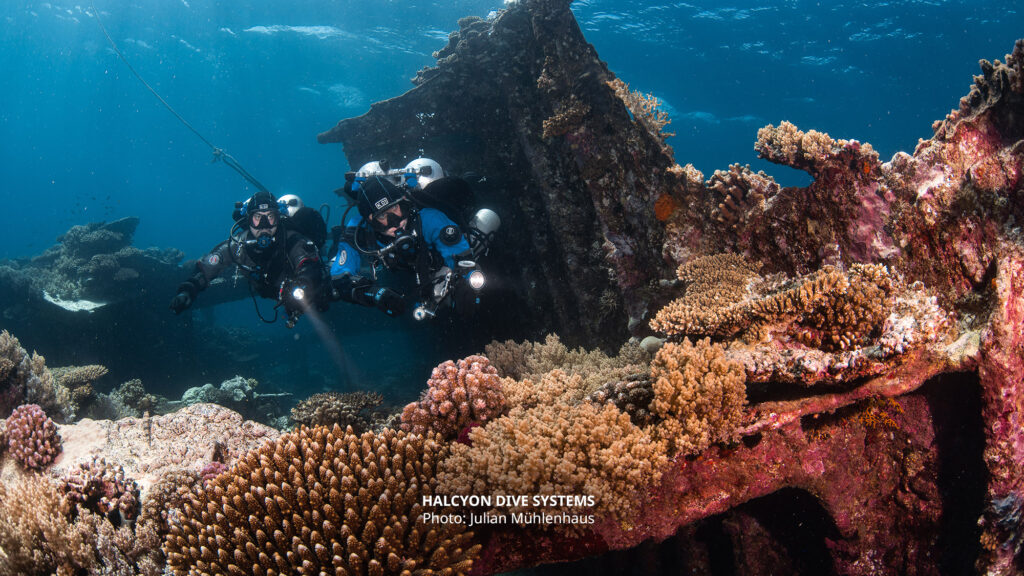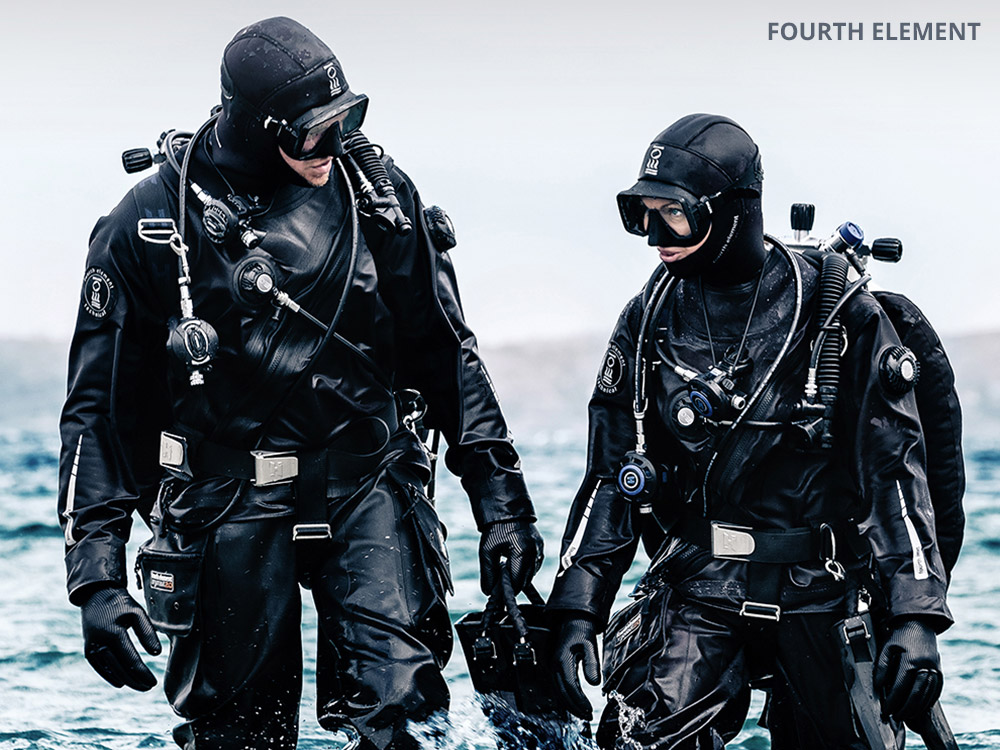If you’ve been diving awhile, you likely have a good idea of what tec diving (a.k.a “technical diving”) is, or you are one. But if you’ve only been around diving for a bit, you’ve likely heard of it, but not know exactly what it is and why some divers (including me) do it.
Let’s compare tec to recreational diving. Recreational diving is no stop (no decompression) diving to 40 metres/130 feet max using air or enriched air nitrox, with limited distances and some specialized training for overhead environments (e.g., inside caverns or under ice). Tec diving is diving (other than commercial or military diving) that exceeds these limits by applying specialized equipment, training and procedures to manage the added risk. (Exceeding recreational limits without tec gear, training and methods isn’t tec diving – it’s being foolish.)

Tec lacks defined outside limits because they change as the sport evolves. Today, tec divers commonly go deeper than 60 metres/200 feet, explore hundreds of metres/feet into caves and spend an hour+ decompressing coming up. Using multiple cylinders (4-6 per diver is common) and/or closed-circuit rebreathers, we go farther and stay longer than is possible in recreational diving, using various gas mixes to offset narcosis and shorten decompression time (go here for more detail).
I started with the first and oldest form of tec, cave diving, motivated by reasons that most tec divers can likely relate to:
“Because it is there.” As Mt. Everest’s first climber Edmund Hillary put it, some places just seem to call us. There are intriguing, unique underwater sites reachable only by going deeper, farther and/or staying longer than you can as a recreational diver. The underwater caves in north central Florida are a prime example. They fascinated me, and that meant learning to cave dive. Challenge. Tec diving requires more equipment, training, planning and personal dedication. While I enjoy relaxing, shallow no stop dives, tec diving’s higher intensity demands a focus, discipline and attention to detail that’s not only rewarding, but has helped improved all the types of diving I do. Accomplishment. Because tec divers do things and see things that recreational divers can’t do or see, I find every tec dive gives a sense of achievement for carrying it out well, but also privilege for having done something special. As I’ve blogged before, diving can take you where no one (or few) has gone before, and this particularly applies to tec. Cool gear. Tec diving got its name because you use more, specialized equipment to manage risk and accomplish a dive. It’s a means to an end, but while it’s not about the gear, if we’re honest, mastering our gear and helping it evolve is part of tec diving’s appeal. Save the ocean. As the dive community unites as Ocean Torchbearers working to preserve and restore the seas, as citizen science divers we augment what researchers can study and learn cost effectively and globally. There’s plenty to do within recreational diving limits, but tec divers expand our efforts into more environments. Already, tec divers help monitor changes in underground, underwater freshwater aquifers, and document invasive species and debris data below 100 metres/330 feet.Admittedly, tec diving is not for everyone. The time, training and money investment is higher than in recreational diving. The physical and mental demands to offset the greater potential risks are greater. There’s a lifetime of awesome underwater adventure and citizen science within recreational limits, so becoming a tec diver is neither inevitable nor necessary to your growth as a diver.

But, if you find tec appeals to you – now or later as you gain dive experience – it requires training. Because of the hazards, it’s not something to figure out on your own, so contact your PADI dive operator and Instructor. Programs range from getting a “taste” of it in a pool experiences, to qualifying to dive to 100 metres/330 feet. And newly revised versions of the popular Tec 40, Tec 45 and Tec 50 courses, with new options (including using trimix and PADI eLearning) are about to debut, so if you’ve been thinking about getting into tec, now is an especially good time.
Seek adventure. Save the ocean.
Dr. Drew Richardson
PADI President & CEO
Share This